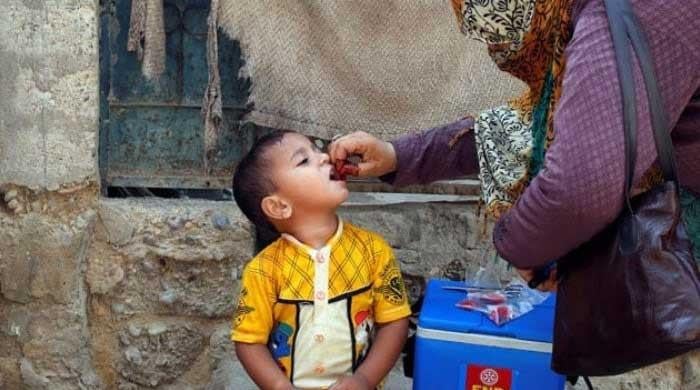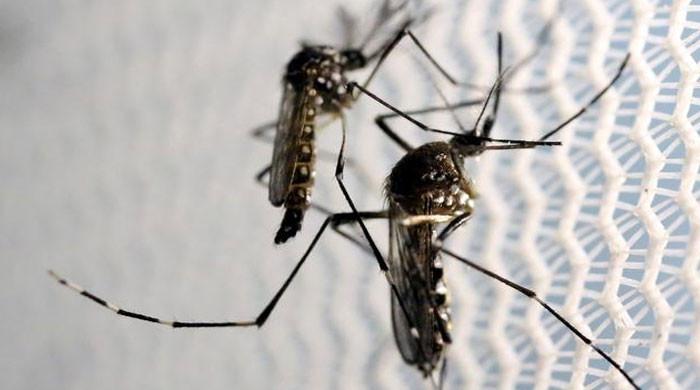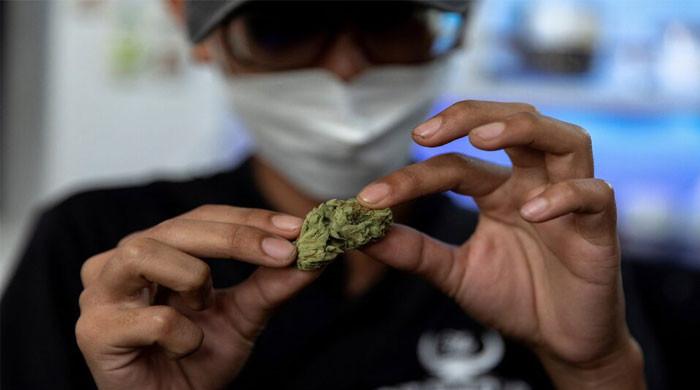Low visibility, health hazard as smog chokes Lahore
Visibility drops to 200-300m on motorway as thick smog envelopes central Punjab
October 31, 2017
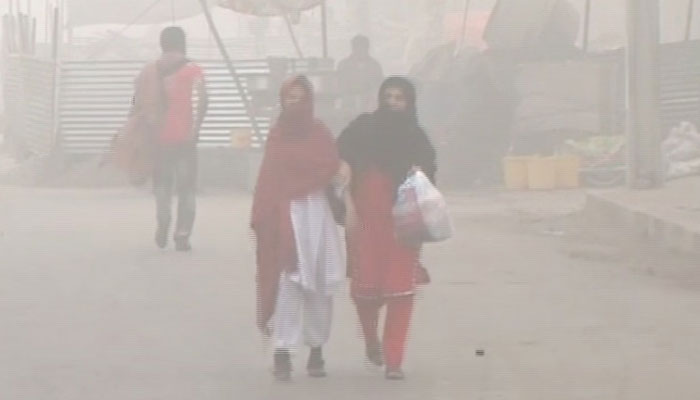
LAHORE: A blanket of thick smog has enveloped Lahore and adjoining regions in central Punjab, reducing visibility and resulting in breathing difficulties and irritation in eyes for residents.
Visibility plunged to 200-300 metres on the Motorway early Tuesday morning, as thick smog – an unwanted by-product of fog and pollution – continued to persist in the air, disrupting transportation.
The motorway police have issued instructions to drivers to reduce speed and switch on fog lights to avoid any unfortunate incident.
Chief Meteorologist Mohammad Riaz attributed the lack of rain, pollution, smoke from vehicles, factories and burnt crops to the worsening smog situation in the provincial capital.
He said the pollution could only be washed away by rain or strong winds.
Speaking in Geo Pakistan morning show, Director Environment Protection of the Punjab Environment Department Naseem-ur-Rehman shed light on a number of preventative measures that have been adopted to deal with the persisting smog.
He said Section 144 has been enforced in the province till December 16 to bar farmers from burning leftover crops waste – a contributor to smog. FIRs will be registered against violators, he added.
The director said around 150 factories causing heavy pollution in the region have been closed down as well.
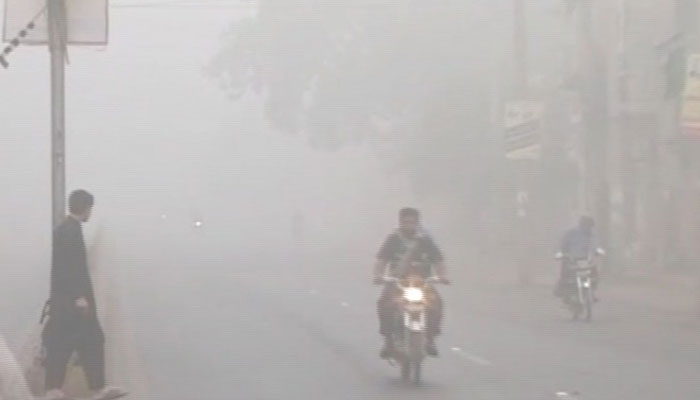
The city traffic police have also been requested to make special traffic arrangements to avoid traffic jams, which further fuel the smog situation, he added.
Dr Khalid Hussain from Services Hospital said that heavy smog was a major cause of road accidents due to poor visibility. He has advised people to move around with face masks to protect themselves from breathing problems, eye, nose and throat infections.
According to noted climate expert Dr Mehmood Khalid Qamar, fresh readings obtained through the recently installed monitoring equipment showed the level of carbon monoxide at 21.29 milligram per metre on the Mall Road, 17.52 in Mohlanwal, and 6.94 in Gulberg's Liberty Market, against the maximum permissible limit of 5 mpm.
What is smog?
Smog, also known as ground-level ozone, is a thick yellowish black fog which suspends in the air.
It is caused when air pollution, emissions and fumes combine with fog and sunlight, forming a thick layer of smoke-like film in the atmosphere. According to experts, emissions from industries and vehicles and cutting of trees worsen the phenomenon.
The Met Office has released a weather warning describing the smog — comprising nitrogen oxide, carbon monoxide, sulphur dioxide and other aerosols — as a result of cold high pressure in the upper atmosphere. Suspended matter accumulates in the lower atmosphere, colliding with water vapour which causes a chain reaction that produces smog.
People may experience short-term skin and respiratory conditions such as eye irritation, coughing, throat/chest irritation and skin irritation as a result of smog.
Health experts recommend artificial tears for eyes as one way of dealing with smog. The public is also advised to adopt preventative measures such as avoiding the outdoors and using face masks when going out, especially young children, elderly and patients.





